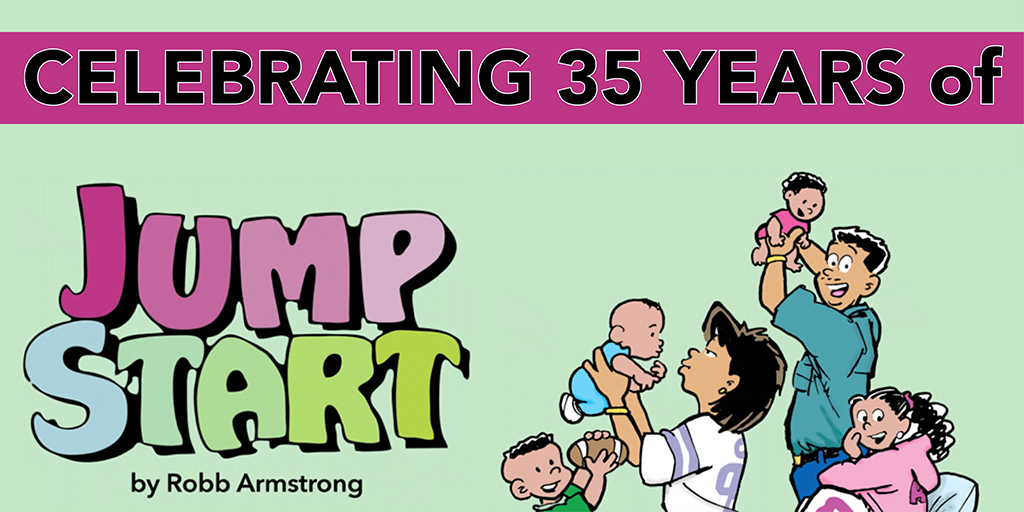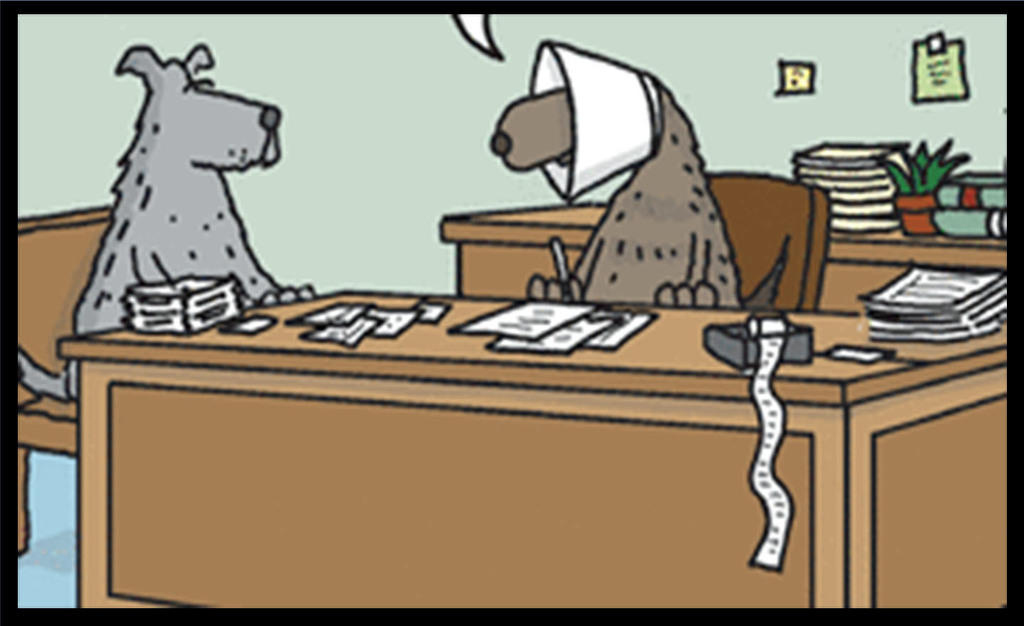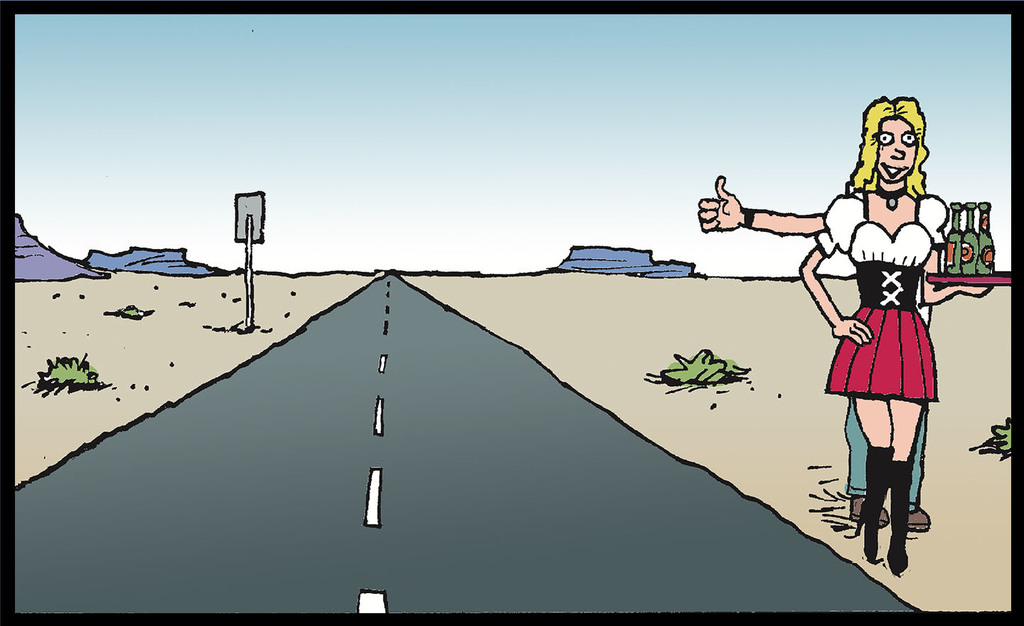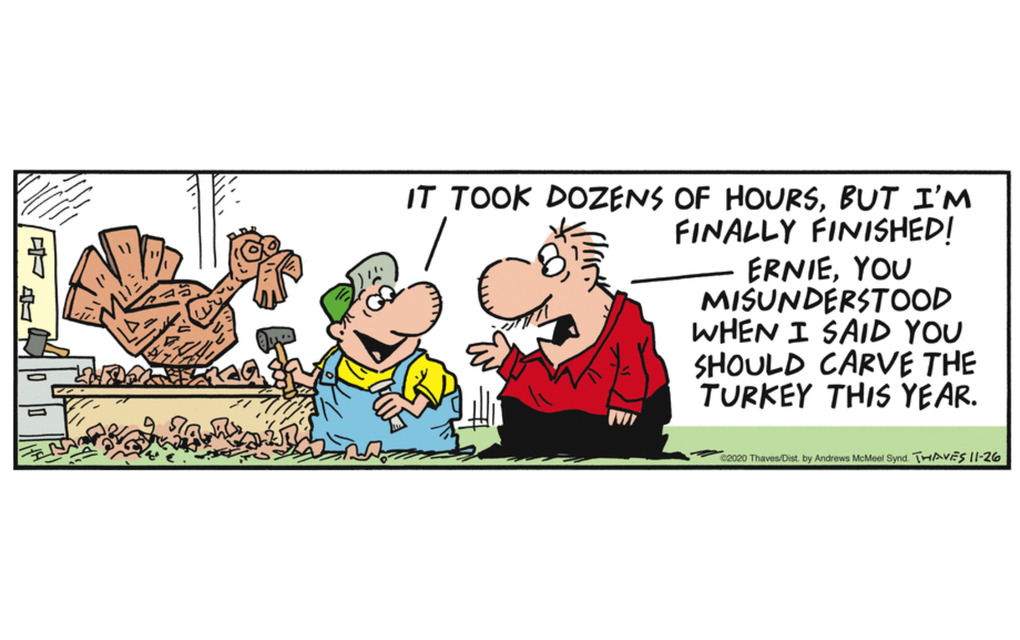Pat Marrin (Francis)
by GoComicsSome background
I grew up in Minneapolis in a large family (seven kids, close in age). I shared a room with three of my brothers, our beds tightly arranged around a single desk where we took turns doing our homework. Each of us had a drawer, and I kept mostly tablets, crayons and pencils in mine. Art was my escape into a world of imagination and stories. I read a lot, had glasses and buck teeth, found that being funny was the best defense (besides having five brothers) against being picked on at school. My dad managed a small foundry and was a great storyteller, and my mom ran the house and encouraged each of us to find our own niche.
I went to a Catholic boarding school, drew cartoons for the student paper and was a good student. After graduation I decided to join a religious community of priests and brothers, and I stayed almost 20 years. I mostly taught high school and used storytelling and art to entertain my students. In my mid-thirties I got into the grad program on a fellowship at the University of Missouri J-school, where the dean let me focus on the political cartoon and take art classes with Frank Stack, who, besides running the art department, was an underground comic book artist. I was hooked on cartooning as the most effective, compact and portable way to communicate important ideas.
My first job after J-school was at a daily newspaper in Topeka, KS, as newsroom artist, political cartoonist and book editor. I got married, became a dad, taught journalism at a small college in Atchison, KS, and ended up at the National Catholic Reporter, a feisty, independent publishing company in Kansas City, MO, as an editor, reporter and illustrator. I did the political cartoon below in 1991 and the illustration for NCR in 2005.
When Francis was elected pope in 2013, NCR publisher Tom Fox was so optimistic, he encouraged me to create a comic strip to celebrate this remarkable leader who was restoring hope to the Catholic church after years of paralysis and retreat from the reforms begun in the 1960s. It seemed at first a risky venture, but Francis has provided enough humor and surprises to keep my imagination in overdrive. I remind myself and others that my "Francis" is only a comic strip, perhaps short-lived as popes and comic strips go, but worth celebrating. The strip appears in NCR (ncronline.org) and, since March 2014, also on GoComics.com.
The Process
I love to draw, but I am short on technical skill above the level of line art and pencil shading. My work has the rough-draft look of an amateur. I am never satisfied with a finished piece, but I resist the urge to do it over. I am a work in progress. I admire artists who have real art training and can use line and wash to get subtle colors. If the strip survives, my goal is learn more so I can do some full Sunday frames in color. I pencil sketch, work up with Flair markers on a light table, digitize with a simple Epson scanner and finish in the Paint program on my PC.
Sustaining a strip based on a single character would be tough, so I created Brother Leo, a nod to an actual companion to St. Francis in the 13th century, to be the pope's personal assistant. Leo started out as a kind of foil to generate comic situations. He is innocent and very literal, so wordplay and puns abound, though my goal is to use as few words as possible. Leo has caught on with my small audiences. Someone in the blog strings referred to him as "the little guy." He became more real, even for me, and I now let him suggest the direction of the strip. Some readers think he is a putdown, but in fact (besides being a cartoon), he is the purest expression of the pope's own values. Other characters will follow. I try to listen to my audience as the strip evolves.
The story line has emerged slowly from single three-frame gags to short series. I show everything to my wife, who doesn't hesitate to say if she doesn't get it (back to the drawing board) or she does, but it doesn't work (BTTDB). For example, I did a strip in which Brother Leo, who thinks he needs to protect the pope, decides to taste all his food. He rejects the broccoli not because it's poisoned, but because he hates broccoli (joke). My wife volunteers at a community garden where they try to get kids to eat vegetables, so she didn't like the message. I changed broccoli to arugula. Still doesn't work, she said. In the end I did three strips in order to redeem the message. I call it the "vegetable" series.
Another longer series follows when Leo brings home a stray dog that turns out to be female and pregnant. Imagine this, in the Vatican. Where there are puppies, more cartoons will follow.
People at NCR come up to my office and look at everything spread out on a table, make suggestions, give me ideas. Once I get an idea, I let it sit for a while. Often ideas come when I am drawing. I start something, change it completely or start over. Adding text is the hardest. I see many artists using computer fonts, which solves the spacing issues. Yet in classic strips like George Herriman's fabulous "Krazy Kat," the hand-written text is part of the composition. The whole thing casts a spell that simply enchants.
I draw at work in between other duties, and at home in the upstairs bedroom that our adult son reclaims when he comes home for visits. I like to be up high with windows. I waste a lot of time watching the squirrels in the backyard, but even they suggest cartoon ideas.
My photo will tell you that I am no beginner. I have come only gradually to try my hand as a comic strip artist after doing many other things to earn a living. I am grateful for the encouragement to come full circle almost at retirement age to fulfill a childhood dream of being a cartoonist.









